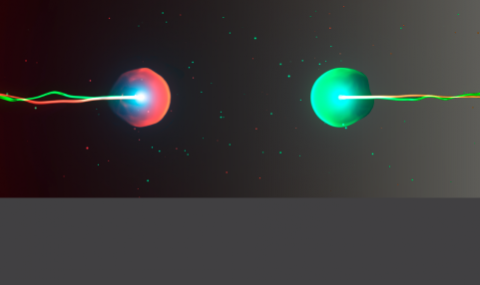Join us in the long awaited testing of lepton non-universality with the ATLAS experiment at the LHC.
The standard model (SM) of particle physics has demonstrated many triumphs along the years since its formulation, notably with the discovery of the Higgs boson by the ATLAS and CMS collaborations in 2012. However, we know that the SM is not complete and cannot describe all phenomena we observe in nature. Amongst other shortcoming of the SM are the fact that it cannot explain gravity, it cannot account for the universe's matter/anti-matter asymmetry, it cannot explain dark matter, end more.
Numerous attempts have been made to extend the SM with "exotic" physics scenarios in order to solve some of the shortcomings mentioned above. Even more searches have been attempted to directly find hints of these exotic signatures. However, it is also possible to find hints for exotic physics while "better" confronting the SM predictions themselves with the experimental data.
The SM has been and is constantly confronted with the data with ever increasing precision. In the vast majority of the cases, the data fits well the theory. However, there are some long-standing exceptions. One such exception is the test of lepton universality in B- and D-meson decays. For example, the measurement of RK*, the ratio between the branching fractions of the B-meson to a K*+e+e- or K*+mu+mu-. In the SM, this ratio is equal to unity whereas in experiment, it amounts to about 0.66 (as of 2017) with a relatively small uncertainty resulting in about 2.6 standard deviations discrepancy from the SM prediction.

An illustration of b-sll transitions in the SM in the case of a B meson decaying into an unspecified H meson and two (light) charged leptons. If the ratio between the two branching fractions to electrons and muons is not equal to unity, it can be explained by contributions of similar diagrams from exotics processes
This is one example out of several such LFU tests which yield similar discrepancies from the SM. This puzzle has triggered a lot of discussion in the community in the past few years and it is currently the most interesting discrepancy from the SM coming from the LHC experiments, notably LHCb which is optimised for such signatures. The ATLAS and CMS collaborations have recently made adjustments to their data taking philosophy to allow collection of such challenging events.
My related research focuses on the RK* measurement. Measuring e.g. a ratio similar to the one measured by LHCb and with a similar precision, would be a groundbreaking indication of new physics and it will essentially change the way we think of the world.


